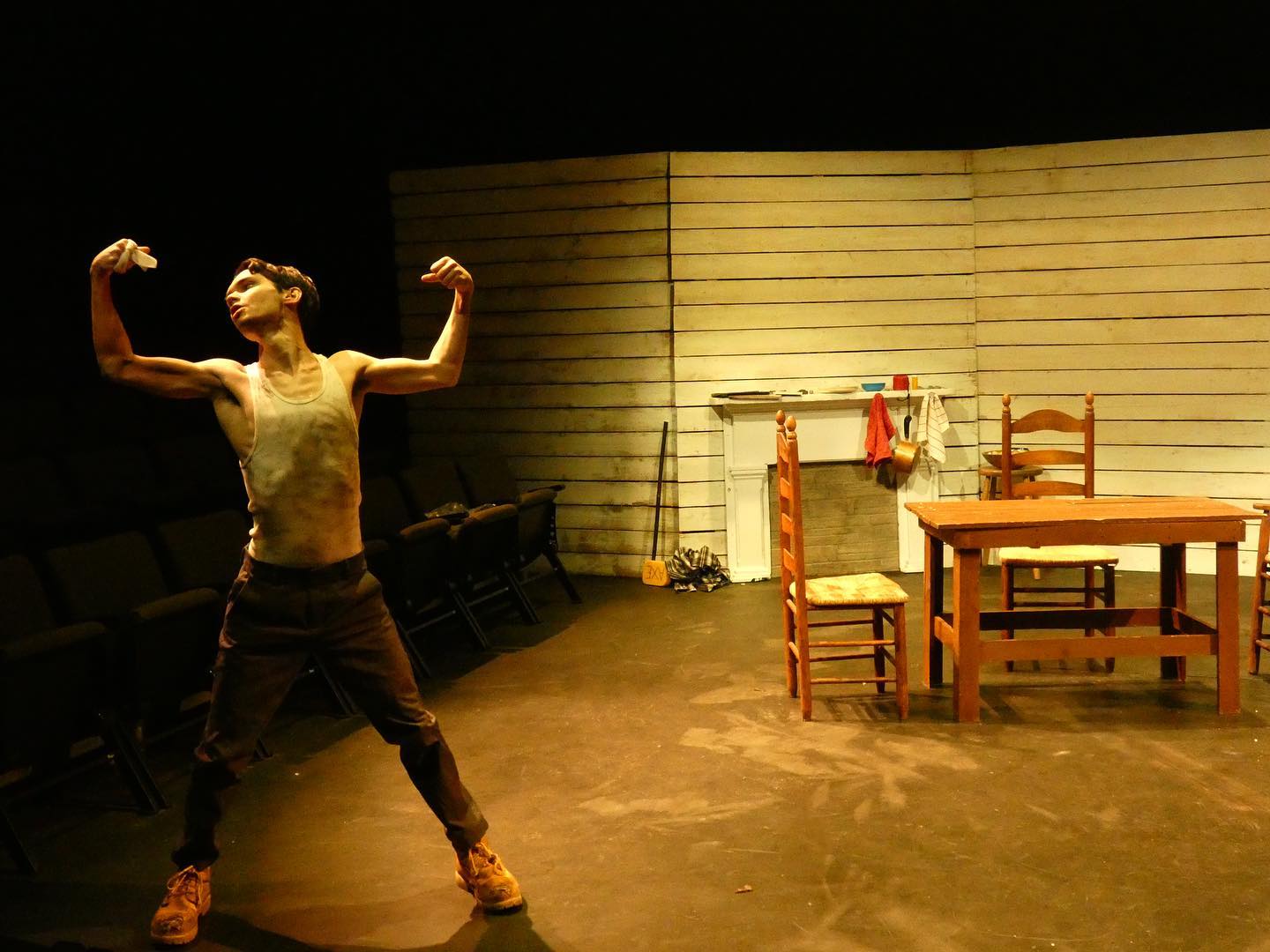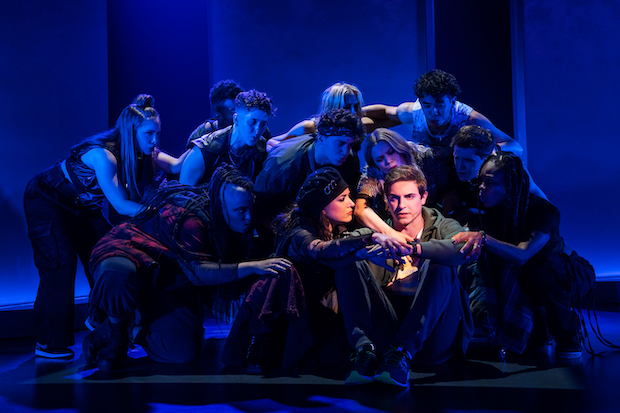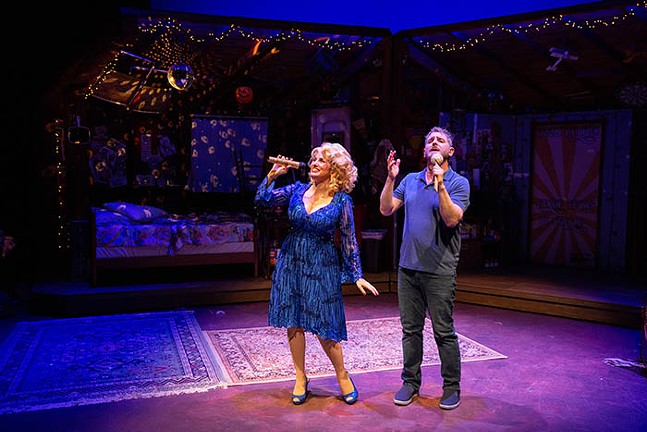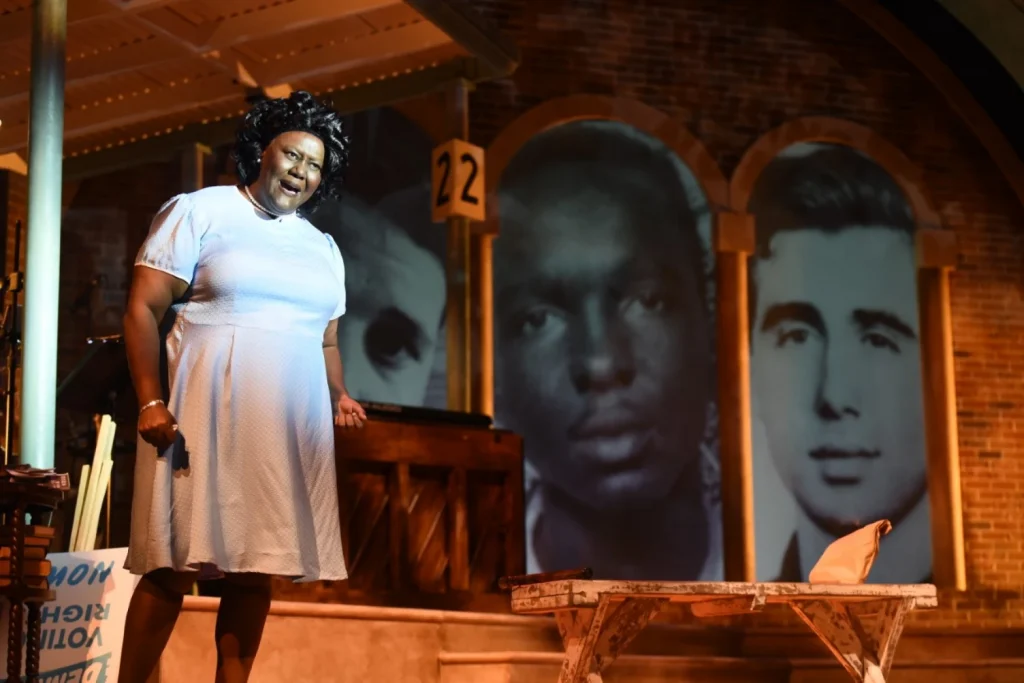By Michael Buzzelli
Playwright Heidi Schreck (Tami Dixon) tells a story about her relationship with the United States constitution in “What the Constitution Means to Me.”
On paper, “What the Constitution Means to Me” begins as a one-woman show, an autobiographical tale from the multi-hyphenate Schreck (a screenwriter for “I Love Dick,” “Billions,” and “Nurse Jackie”), but, like the constitution itself, new elements are added as it progresses.
The character of Schreck tells a story of her youth, crisscrossing America, winning speech and debate money for college at a young age. It flashes backward to a rural American Legion Hall in the middle of Washington state.
She weaves a bunch of disparate elements into her story, describing the constitution as a crucible, a cauldron filled with a variety of ingredients, forged in fire.
A stern Legionnaire (Ken Bolden) steps out to stage. Later, we learn he is an actor named Mike playing the Legionnaire. Things get very meta.
Towards the end of the show, we meet Lamees Subeir, a high school debate champion (on alternate nights the role is filled by Swati Mylarappa).
The two must then debate on whether the constitution is a document worth keeping or if it’s time to strike the whole thing down and start over. The contest is ultimately decided by an audience member who chooses between two cards, Pro and Con.
It’s a gimmick that the show didn’t need. Schreck’s writing is deeply personal story that, at times, may make your blood boil, but, alternatively, cause you to howl with laughter.

At one point, Heidi says, “This isn’t a tangent. There are no tangents in this show.” Ironically, it is all tangential, but it works. After all, the constitution meanders. It goes on many side trips. It’s the strength of the writing and acting that brings it into a cohesive whole.
Dixon is incredible. She commands the stage. The petite woman has big expressions. She slayed the audience with a sly look, a simple shrug, and a wink or two. While well-known locally, she is a star. The number one reason to see the show.
Bolden’s shift-change between stern Legionnaire and gender-fluid actor is awe-inspiring. They are dramatically different characters played by a tremendous talent.
Lamees does a great job as well. She is a poised, confident young woman and gives this reviewer hope for the future. Unfortunately, she is part of the gimmicky section of the show. Excising this section of the show, however, could make the show a real downer. Clearly, like the play itself, there are pros and cons.
Director Marc Masterson does a masterful job of getting stellar performances out of his cast. He doesn’t keep Dixon behind the podium too long, but moves her around the room, adding a robust energy to the play.
On the heels of Tony Ferreri’s retirement, scenic designer Sasha Schwartz has some big shoes to fill, and does it with aplomb. One look at the set, and you are instantly transported to the Legion Hall, dense with jingoistic ambiance.
Bolden’s overly decorated Legionnaire costume is another terrific sight gag, a wonderful wearable prop by costume designer Richard Paraskian.
“What the Constitution Means to Me” isn’t a perfect show, but, like the constitution itself, it is more than the sum of its parts.
Theater should entertain and make us think. Schreck’s musings on America does just that. It’s a must-see production.
-MB
“What the Constitution Means to Me” runs through February 12 at the City Theatre, 1300 Bingham Street, Pittsburgh, PA 15203. For more information, click here.

















